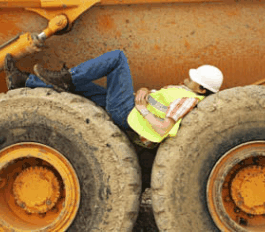
Jessica Irvine has posted an interesting article on Business Spectator today arguing that Australia’s governments should borrow and build infrastructure in order to fill the void left as the mining investment boom unwinds. Let’s take a look:
Australia has a significant urban infrastructure deficit, and a deep pool of superannuation savings but lacks the political will to unleash a much-needed wave of infrastructure spending.
As things stand, all hopes are currently pinned on an interest-rate fuelled recovery in the housing sector. But those holding their breath for a housing boom may be left blue-faced…
Dwelling investment remains low. Local councils and a ‘not in my backyard’ attitude to new development among existing owners remain intractable barriers to urban infill.
Hope as the Reserve may, a housing recovery is unlikely to fill the gap of the receding mining boom.
We need something bigger, like a new boom in road, rail and public transport construction…
There is a window of opportunity to redeploy workers in engineering and construction to public or private urban infrastructure projects before they lose their skills…
Now is exactly the right time to be encouraging and facilitating infrastructure investment…
It’s time to put the nation’s credit card, and its ultra low interest rate, to work…
Australia needs an independent agency, on par with the Reserve Bank, with the power to decide infrastructure priorities.
Bravo. Most people living in Australia’s major capital cities would agree that infrastructure is in desperate need of upgrading. After decades of under-investment and high population growth, our roads are clogged, public transport it over-crowded, and our essential infrastructure is degraded, requiring tens of billions of dollars in new investment.
Nation building was once a key feature of Australian government. However, the more recent addiction to running surpluses has precluded such longer-termed investment, with most governments happy to take the sugar hit to growth from a growing population without concern for the negative longer-term consequences on infrastructure capacity, living standards, or productivity.
As Irvine points out, well targeted infrastructure investment offers Australia the double dividend of supporting growth and jobs as the mining investment boom fades, whilst also expanding Australia’s productive base and improving living standards.
Such investment could be funded via long-term bonds, as was the case during the post-war baby boom, as Warwick McKibbin argued last night, or, as the Modern Monetary Theorists would argue, by the Federal Government borrowing from the Reserve Bank of Australia (a form of quantitative easing).
Indeed, New South Wales’ “Waratah bonds”, launched in August 2011, represent one potential funding model. Under the program, investors receive a fixed interest rate of 3%/3 years or 4%/10 years, with the funds raised used solely for the purposes of infrastructure investment. Since its launch, the New South Wales Government has raised $200 million, with the lion’s share of these funds coming from wealthy Chinese via the Significant Investor Visa (SIV) program [the New South Wales Government requires one-third of SIV funds to flow to Waratah bonds].
The important thing is that the infrastructure investment takes place. Going into debt to fund expenditure is not a problem provided that expenditure expands the productive base of the economy, allowing the debt to be self-liquidating.
Like it or not, Australia looks to be headed off the mining investment cliff, which threatens to badly hit growth and jobs across the economy. However, the blow can be softened through well-targeted infrastructure investment, which can also set us up for the future.

